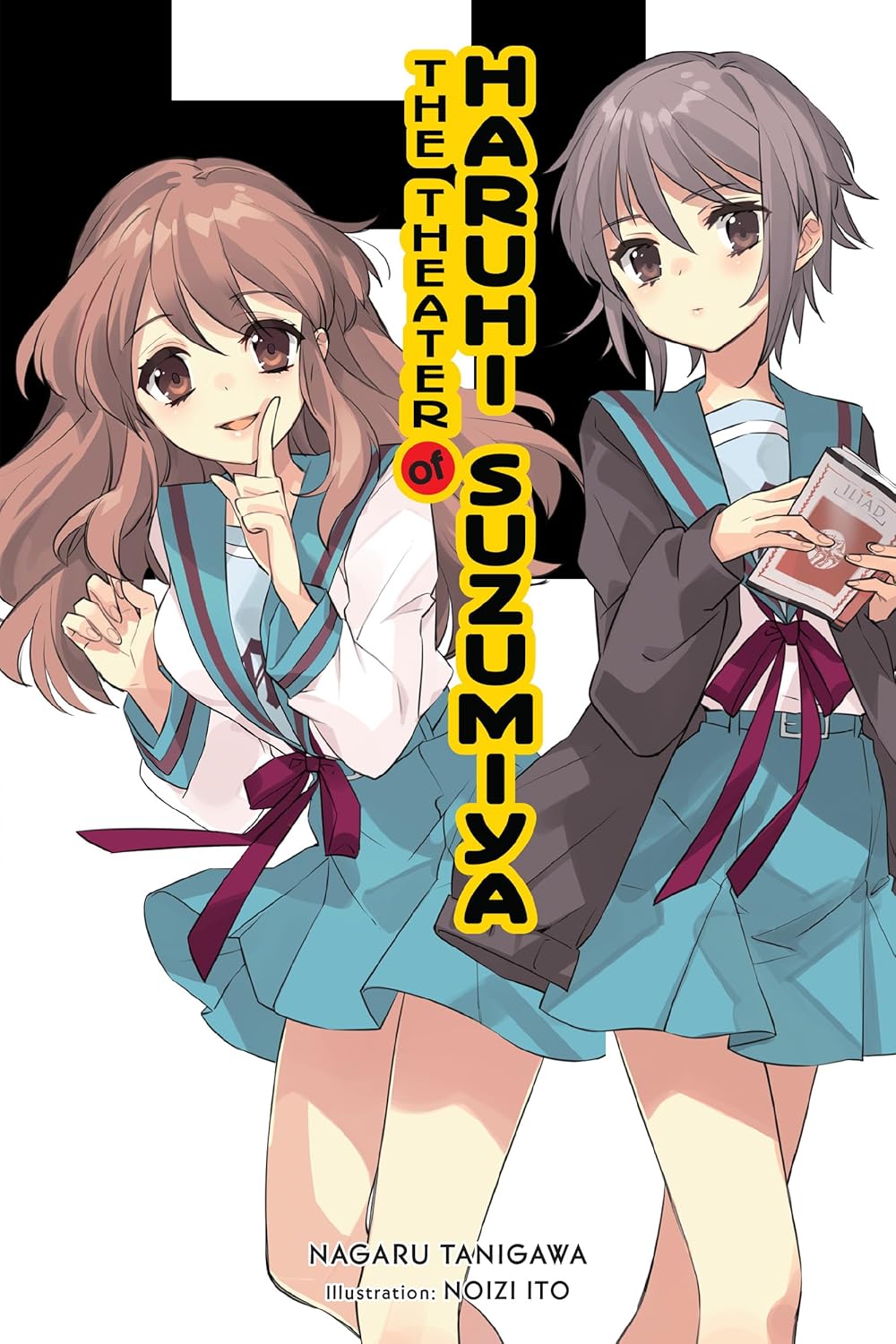By Nagaru Tanigawa and Noizi Ito. Released in Japan as “Suzumiya Haruhi no Gekijo” by Dengeki Bunko. Released in North America by Yen On. Translated by Andrew Cunningham.
I suspect how much you enjoy the latest book in this series depends on what you enjoy most about it. If you’re the sort who likes the sci-fi trappings and everyone trying to figure out what’s going on, you’ll be in clover, as that’s basically what this book is about, especially the back half, which features far more discussion of quantum mechanics than any light novel really needs. If you enjoy Haruhi doing funny things, Mikuru being adorably clumsy yet cute, and Nagato saving the day, this is also a strong book. Kyon’s narration is not quite as caustic as it’s been in the past, but I’ll forgive it. Unfortunately, if you read this series for character development, this is not the book for you. It’s an extension of two short stories that ran in The Sneaker 20 years ago, and seems to take place before the 4th book/movie, meaning most of the softening of Haruhi’s character is absent. It’s a fun book, but it’s not necessary as the next in the series.
We open with what looks like the most 2024 thing ever, even though it was written in 2004 – Haruhi and company get isekai’d to another world to save the kingdom from the demon lord. Haruhi being Haruhi, she proceeds to do whatever she wants, and only saves the world because Mikuru blows up the demon lord’s castle with magic. Suddenly they’re now in an outer space setting, and have to rescue two nobles from space pirates… something that’s also screwed up due to Haruhi’s gung-ho approach. Then all of a sudden they’re in a Western setting, with a shootout, and Kyon, Koizumi and Nagato are starting to realize something is wrong. Unfortunately, they can’t trust their memories, and as they go through more and more pulp fiction scenarios, the question becomes whether they can stop it at all… or even who they really are.
The idea that the cast are trapped in a bunch of tropey fictional settings is a good one. As you’d expect, the weakest part of it is the start, with the two stories written so long ago. They’re pure comedy, not really doing anything with the characters. Once Kyon and Koizumi start discussing what’s really going on, things pick up a lot more… or at least they do if you can put up with Koizumi’s philosophizing. There may be more of that in this book than any other in the series, so reader beware if you’re not in the mood for it. The one scrap of characterization we got was near the end, when Koizumi suggests that they’re likely just virtual reality mindselves, and that escaping the game might mean death. Nagato explicitly says that she wants to return to the real world, to be in the club with everyone. It’s pretty nice.
If you wanted another volume in the series, this sure is one. Still no actual continuation, but I’m not really expecting that anymore. For fans.



